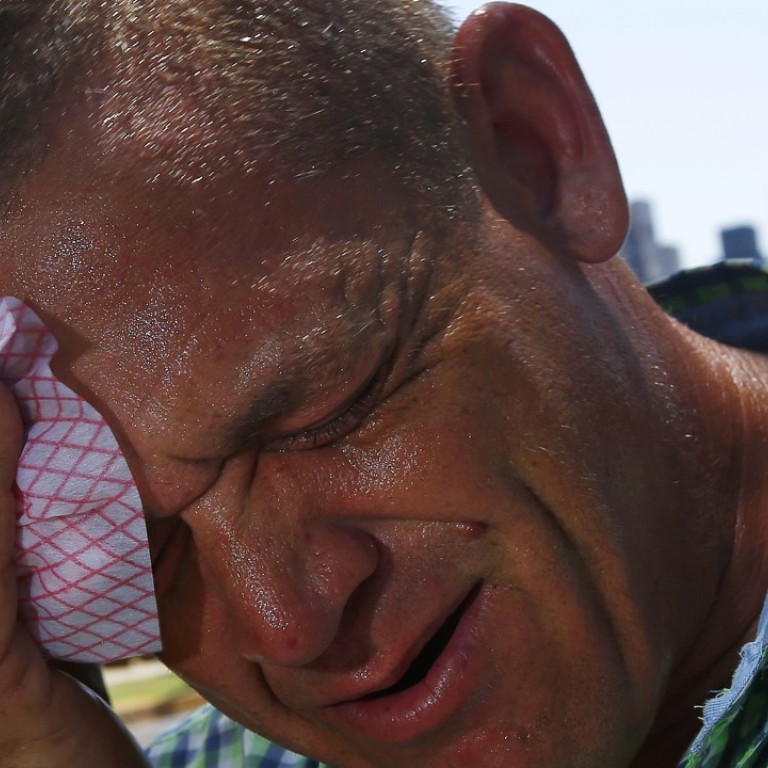
US Southwest bakes under record heat, making it too hot for some planes to fly
Record high temperatures are expected in parts of the US Southwest on Tuesday, taxing power grids, prompting safety warnings and making it too hot for some aircraft to fly.
The heat wave, brought on by a high-pressure system camped over the Four Corners region, was expected to raise Tuesday’s high temperature to a record 120 degrees Fahrenheit (48.9 Celsius) in Phoenix, Arizona, the National Weather Service said.
“This typically happens in June where you get a subtropical high (pressure system) that ends up shifting northward,” said meteorologist Bianca Hernandez of the National Weather Service office in Phoenix.
“Today is the peak and then tomorrow will be a little bit cooler, but we’re still expecting temperatures above 115 for Phoenix,” she said.

At Phoenix Sky Harbour International Airport, American Airlines cancelled 43 inbound and outbound flights during the peak-heat hours of 3 pm through 6 pm local time, after cancelling seven on Monday. Passengers may rebook their flights or get full refunds, American said.
The airline said it does not expect to cancel any Phoenix flights on Wednesday, but will re-evaluate early in the day.
The cancelled flights are part of the airline’s regional flight system, and are operated by other carriers that use Bombardier aircraft which are not permitted to fly when temperatures exceed 118 degrees, American said.

Smaller aircraft, such as those made by Bombardier, are more susceptible to heat, which makes air less dense and reduces lift, than larger, more powerful aircraft.
Phoenix, which tied a record high temperature on Tuesday at 118 degrees, is no stranger to extreme heat. The all-time high temperature for Sky Harbour Airport was 122 degrees on June 26, 1990.
In Death Valley in eastern California and in the town of Needles near the Arizona border, the National Weather Service is forecasting high temperatures of 127 degrees Fahrenheit (52.8 Celsius) this week.

The National Park Service cautioned tourists there about the “EXTREME SUMMER HEAT” in a warning on its website. It also issued an “Excessive Heat Warning” at the Grand Canyon in Arizona, urging hikers to hydrate themselves and eat salty snacks.
Power grid operators and utility companies urged customers to conserve electricity at peak times to avoid the possibility of blackouts.
The high pressure system stretched north to Alaska, where it was blamed for creating dry conditions that enabled lightning strikes to start forest fires.

